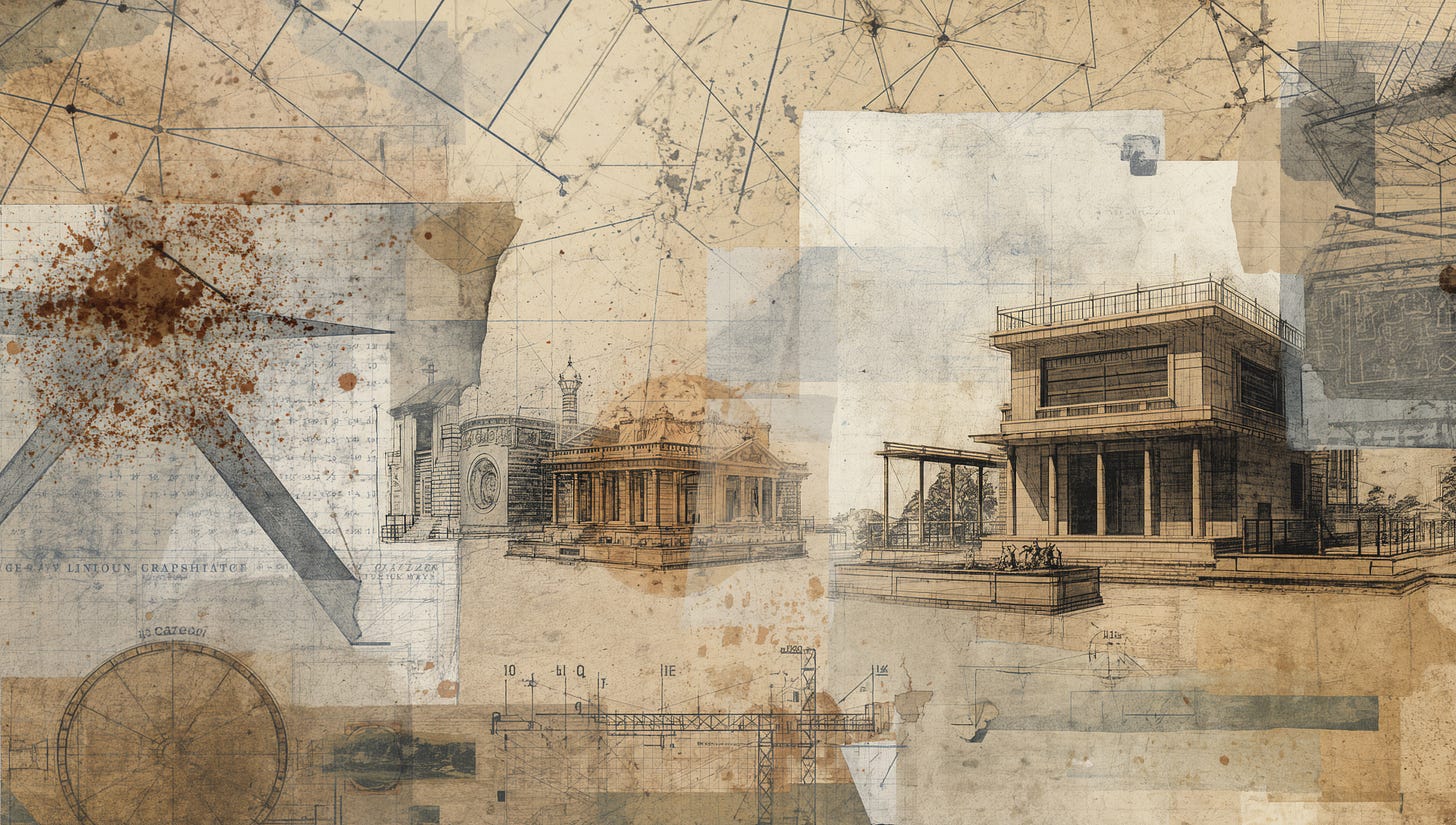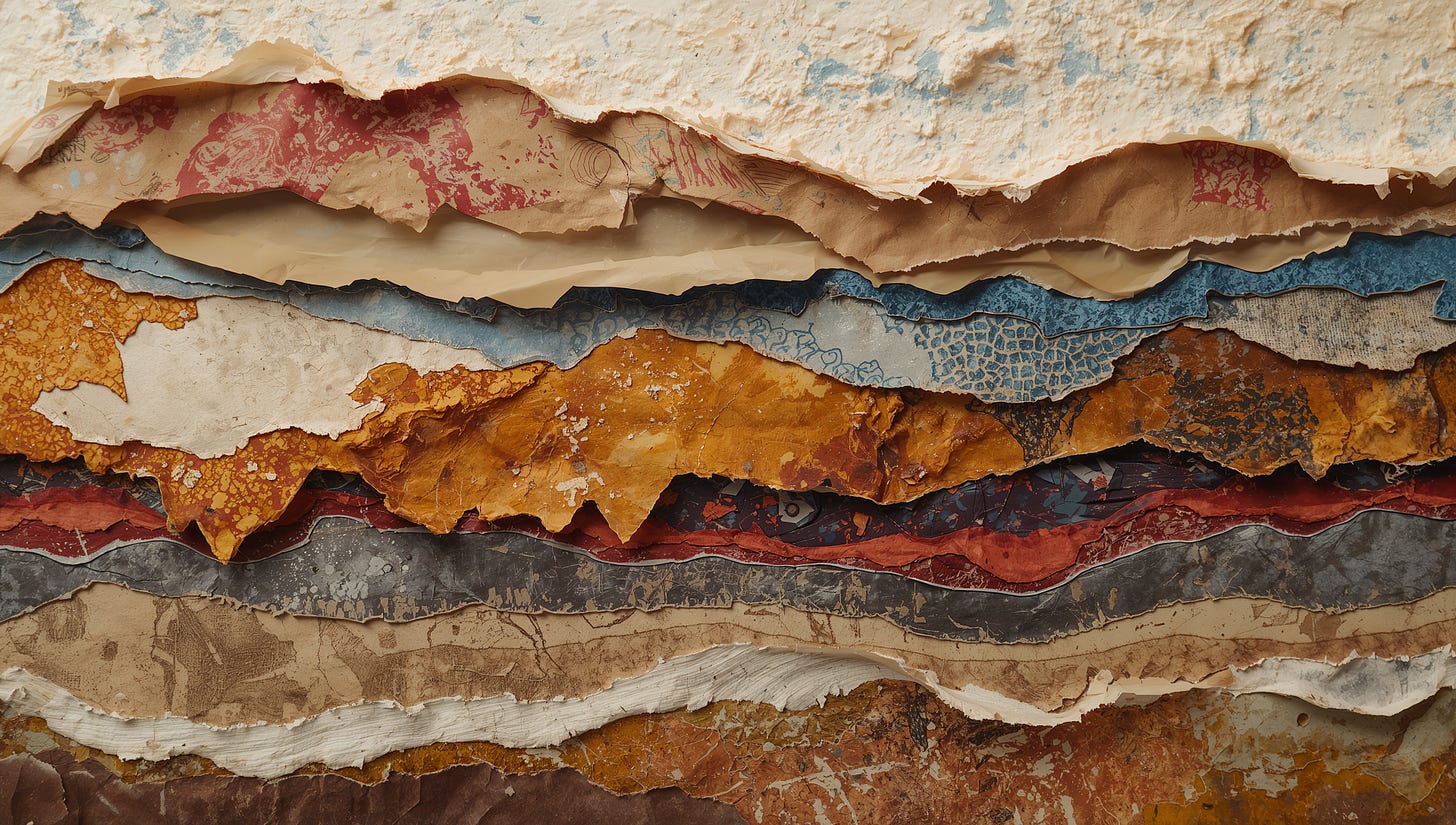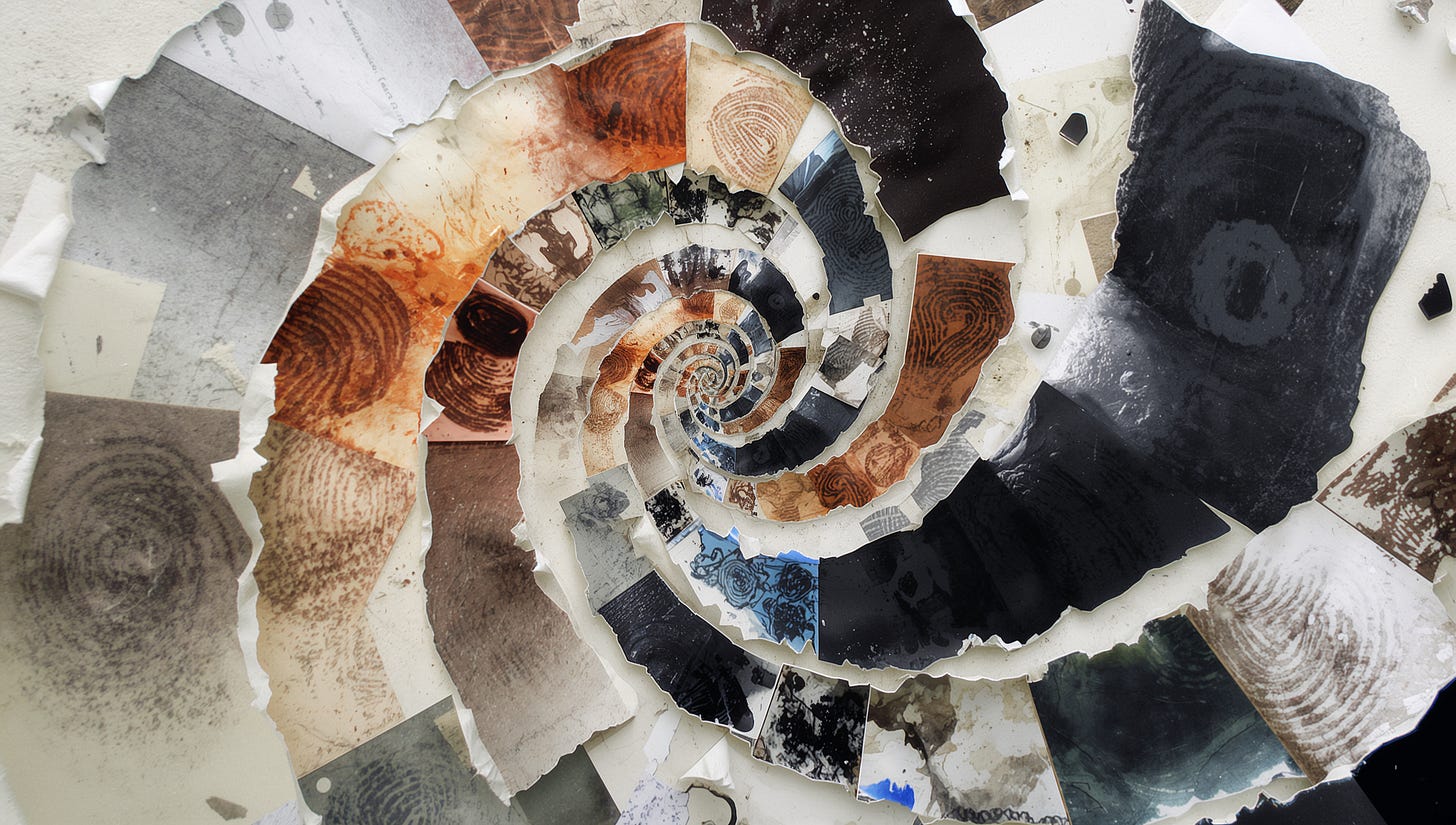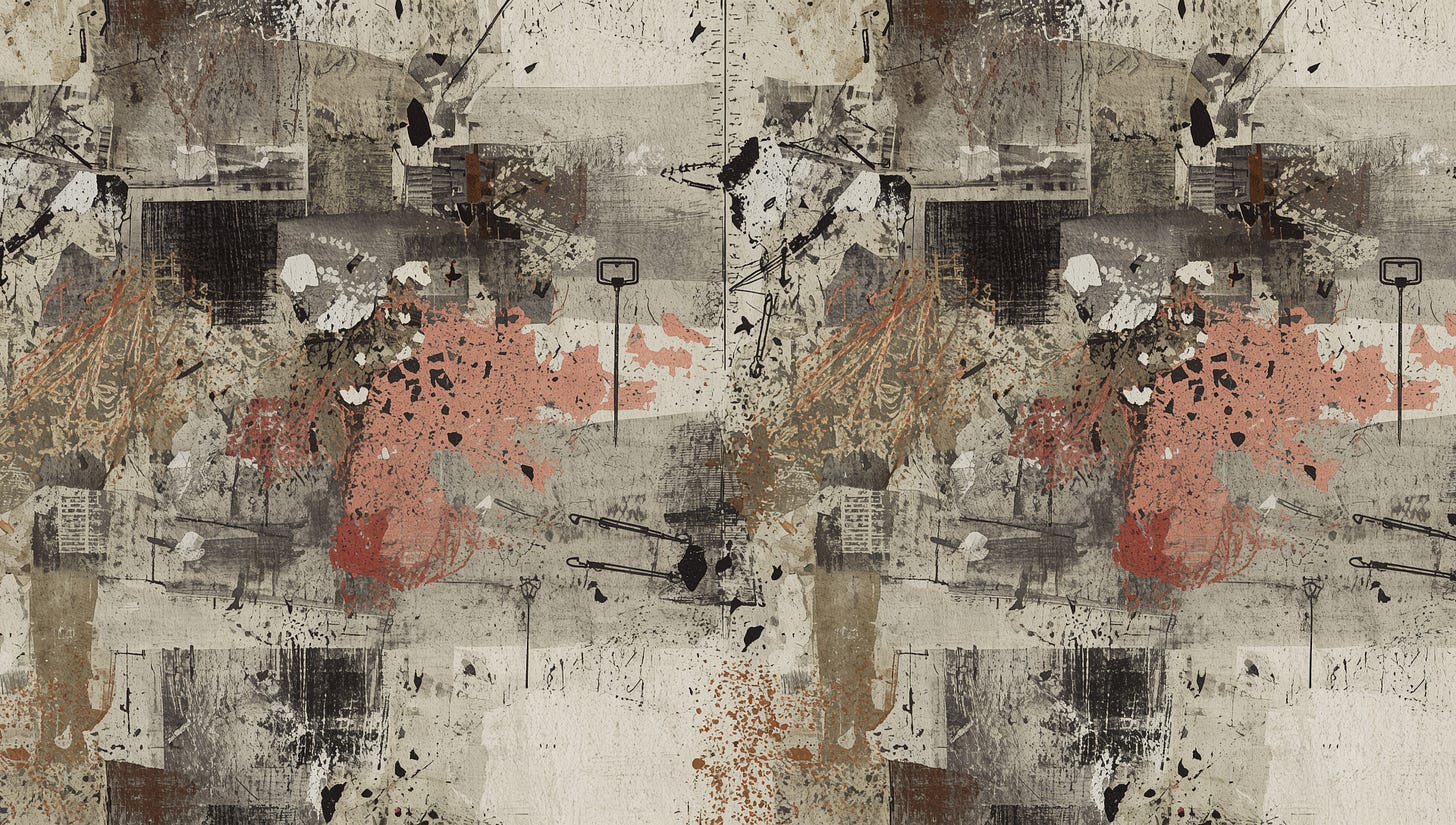Proof of Work: The Radical Act of Showing Your Mess
What Educators Can Learn from Artists Fighting AI
A student submits a flawless essay on Shakespeare. It took them three weeks or three seconds. How can you tell?
This question haunts every classroom because AI has shattered our traditional metrics. A polished essay, once proof of weeks of effort, can now be generated in seconds. As an educator it is tempting to turn to automated detection tools. But rather than depending on these unreliable systems that frequently misidentify authentic student work, we should look to creative professionals who have already solved this problem in their own field.
In a digital world flooded with AI-generated content, many artists have begun a radical act of transparency. They are no longer just sharing finished pieces; they are documenting every part of their messy, iterative process. Creative software applications like Procreate facilitate this shift through an automatic recording feature, which captures every brushstroke, allowing users to export their creative journey as time-lapse videos with a single tap. These recordings offer tangible evidence that their digital art was born from a human mind, not an algorithm.
This movement offers a powerful lesson for educators. The solution is to adopt the artists' strategy: make the invisible journey of learning visible. In this article, I propose we formalize this concept as a pedagogical framework, borrowing the term "proof of work" to mean the documented evidence of a student's intellectual and creative process. This is more than just "showing your work" in math; it is a comprehensive framework for valuing the deeply human process of discovery and learning.
The Borrowed Language of Authenticity
The choice to adopt the term "proof of work" for this framework carries both irony and insight. Originally coined in 1999 by computer scientists Markus Jakobsson and Ari Juels, it described a system where computers solve complex puzzles to prevent spam and establish trust in digital networks. The concept gained widespread recognition through Bitcoin and blockchain technology, the same systems that gave us NFTs, which many traditional artists viewed with deep skepticism.
Yet this borrowed terminology reveals something unexpected. Just as Bitcoin miners demonstrate computational effort to secure a network, artists now demonstrate human effort to secure the value of their work. Both systems respond to the same fundamental problem: preventing the debasement of value when copies can be produced at virtually no cost.
The crucial distinction lies not in the mechanism but in the meaning: cryptocurrency proves computational work; artists prove human intentionality, narrative, and the qualities that algorithms cannot authentically replicate. This distinction teaches us that creators cannot win by competing with AI on speed or volume. Instead, the creator's proof of work must demonstrate something fundamentally different: the messy, non-linear, deeply human journey of creation.
This same principle now applies directly to our classrooms, where we must help students document not just what they learned, but how they learned it.
A Pedagogy of Proof: Making the Invisible Visible
What artists are doing to establish authenticity—documenting sketches, sharing time-lapses, revealing their creative mess—is exactly what we now need in education. When a polished essay can be generated in seconds, when a technically proficient image emerges from a simple prompt, the final product alone tells us nothing. Just as artists have shifted from showcasing only finished pieces to revealing their entire creative journey, educators must help students make their learning process equally visible. As I have explored in the Process-Centered Critique Model I introduced in a previous post, this means adopting what we might call a “pedagogy of proof”—teaching students to become documentarians of their own thinking.
To make this practical, we can organize process documentation into four categories that capture different aspects of learning (building on the Four Lenses of Critical Engagement I've explored in a previous article: critical reading, listening, seeing, and making). Think of these as four ways students can make their thinking visible; each revealing something unique about how human minds actually work, as opposed to how AI generates content:
Critical reading involves documenting research and influences. Artists share annotated bibliographies and mood boards with detailed commentary. Similarly, a tenth-grade history student studying the Great Depression might maintain a source journal, not just listing books and articles but recording their evolving thoughts as they encounter conflicting perspectives. They might note: "Started thinking the stock market crash caused immediate widespread poverty, but these oral histories show many rural communities didn't feel effects until 1931-32. How does timing matter to understanding cause and effect?"
Critical listening captures how ideas evolve through dialogue. Platforms like Behance allow artists to post work-in-progress updates and receive community feedback. In the classroom, a middle school science student might document their experimental design process through peer review notes: "Sarah suggested controlling for temperature after our first trial failed. This completely changed our results." These annotations prove the work emerged through collaboration, not in isolation.
Critical seeing reveals the deliberate choices behind composition and structure. Just as designers share wireframes and geometric grids, a high school English student might submit a color-coded essay outline showing how they restructured their argument three times before finding the right flow. They make visible what's usually invisible: the architectural decisions behind seemingly effortless prose.
Critical making provides tangible evidence of hands-on labor. Artists create time-lapse videos of paintings emerging stroke by stroke. In education, this might look like a mathematics student recording themselves working through calculus problems, narrating their thought process aloud, catching and correcting their own errors in real time. The struggle becomes part of the proof.
The Risks and Rewards of Transparency
These four lenses of critical engagement offer a framework for documentation, but implementing them in educational settings requires careful consideration. Artists who have pioneered these practices in their fight against AI-generated artwork have discovered that transparency, while essential for establishing authenticity, creates its own complex set of challenges. Their experiences navigating these challenges provide crucial insights for educators who must now guide students through similar territory.
The rewards of transparency are significant. Artists who share their process build engaged communities and transform passive consumers into invested audiences. Research demonstrates that when people understand the creative process, they develop deeper appreciation for the work itself. In educational contexts, this translates to richer peer learning, more targeted instructor feedback, and students who can articulate not just what they know but how they came to know it. Yet these benefits come with real vulnerabilities.
There's a psychological "bias against creativity" where people instinctively recoil from work that appears unfinished or uncertain. An artist's messy sketchbook, shared too early, might undermine rather than enhance their credibility. More concerning still, many technology companies now claim broad licenses to use uploaded content for AI training. Artists sharing detailed process work might inadvertently feed their techniques into the very systems they're trying to differentiate themselves from. For students, this means their documented learning processes could become training data, their intellectual development commodified without consent.
The resolution lies in what we might call "curated authenticity." This isn't about fake transparency or manufactured struggle. Instead, it means thoughtfully selecting which parts of the process to share and when. An artist might share rough sketches but not their proprietary brushwork techniques. A student might document how their thesis evolved through multiple drafts without sharing early versions that might be misinterpreted or appropriated.
This curation itself requires teaching. We must help students understand that documenting their process doesn't mean exposing every uncertain moment. It means constructing a narrative that honestly represents their journey while protecting their intellectual property and maintaining their confidence. The story of struggle can be authentic without being exhaustive. This principle of thoughtful transparency becomes a critical skill we must teach alongside traditional academic competencies.
When Students Become Documentarians
The adoption of proof of work principles necessitates a fundamental reconsideration of pedagogical practice across disciplines. If establishing authenticity and value in professional contexts now requires comprehensive process documentation, educational institutions must prepare students for this reality through systematic integration of metacognitive practices into curriculum design.
The implementation of process documentation in mathematics education illustrates the pedagogical shift required. Traditional problem sets evaluate final answers and, at best, shown work that demonstrates procedural knowledge. However, proof of work pedagogy demands what we might term "cognitive archaeology": the systematic excavation and preservation of mathematical thinking as it unfolds.
This involves students annotating not merely what methods they employed, but documenting their strategic decision-making, their recognition of dead ends, and their moments of conceptual breakthrough. Research in mathematics education has long recognized the value of error analysis and metacognitive reflection, but these practices have typically remained supplementary. The proof of work paradigm elevates them to primary importance.
In experimental sciences, the traditional lab notebook already provides a foundation for process documentation, yet current practice often emphasizes data recording over cognitive process. The evolution toward comprehensive documentation requires students to capture not just observations and measurements, but the reasoning behind methodological choices, the hypotheses that didn't pan out, and the interpretive frameworks they applied and discarded. This aligns with established principles of scientific inquiry but demands a more explicit articulation of typically tacit knowledge.
The humanities present unique opportunities for process documentation that align with disciplinary values around interpretation and argumentation. Literary analysis, historical research, and philosophical inquiry all involve iterative engagement with texts and ideas. Documentation might capture the evolution of interpretive frameworks, the dialogue between primary and secondary sources, or the refinement of argumentative structures. This mirrors practices in digital humanities, where scholars increasingly document their methodological choices and interpretive processes as integral to their scholarly contributions.
The cognitive load implications of comprehensive process documentation cannot be dismissed. Research in educational psychology demonstrates that metacognitive monitoring itself requires cognitive resources that might otherwise be devoted to primary task completion. This presents a pedagogical paradox: the very act of documenting learning might interfere with learning itself. The resolution lies not in universal application but in strategic deployment. Documentation should be integrated at natural reflection points in the learning process rather than as continuous parallel processing.
Furthermore, neurodevelopmental diversity demands flexible approaches to process documentation. Students with attention regulation differences may find certain forms of documentation disruptive to their cognitive flow states. Those with processing speed variations might require alternative timelines for metacognitive reflection. The principle of Universal Design for Learning suggests that multiple means of representation, engagement, and expression should extend to process documentation itself. This might manifest as visual mapping for spatial processors, verbal protocols for linguistic processors, or embodied demonstrations for kinesthetic learners.
The Practical Challenge of Implementation
The most pressing question isn't whether we should adopt proof of work principles in education but how to do so without doubling everyone's workload or turning authentic learning into performance. Three principles can guide this implementation.
Start small. Pick one assignment per unit where process documentation matters most. In elementary school, this might be the monthly creative writing project where students keep an "idea garden" journal, jotting down snippets of overheard dialogue, interesting words, or story seeds. By fifth grade, they're naturally narrating how a random observation about their dog's sleeping position evolved into a fantasy story about dream-walking puppies.
Build documentation into existing structures rather than adding new requirements. If students already do peer review, have them save and annotate those peer comments. If they already revise essays, have them use Google Docs' version history to create a brief screencast explaining their major changes. The goal isn't to create extra work but to make existing work visible.
Most importantly, model the process yourself. Share your own messy lesson planning notes, the three versions of a worksheet you created before finding one that worked, the student question that made you completely rethink how you teach a concept. When students see their teachers as learners who struggle and iterate, they're more likely to value their own process documentation.
The Human Story as Ultimate Proof
The emergence of proof of work in creative fields represents more than a defensive response to AI. It signals a fundamental shift in how we understand and value human effort. For educators, the parallel transformations in creative industries and classrooms offer both validation and guidance.
This isn't merely about proving that humans were involved in creation. It's about celebrating what makes human creativity irreplaceable. The false starts, the "aha" moments in the shower, the way a chance conversation completely reframes a problem. These elements of human thought that AI cannot authentically replicate become the new markers of value.
The pedagogical implications are clear and actionable. Tomorrow, try this: Ask students to submit one paragraph explaining how they approached their homework, what confused them, and what helped them break through. Start there. Build slowly. Make thinking visible one assignment at a time.
In an age of instant generation and infinite replication, the documented journey of human thought becomes the ultimate proof of work. Our task as educators isn't to compete with AI but to help students articulate and value what makes them irreplaceably human. Their stories of learning, struggle, and growth are proofs that no algorithm can forge.
I'd love to hear your proof of work stories. Have you tried process documentation with your students? What worked? What flopped spectacularly? What concerns do you have? Let's build this conversation together in the comments.
And if you found this helpful, subscribe to The Augmented Educator for more explorations of teaching in the age of AI.
P.S. I believe transparency builds the trust that AI detection systems fail to enforce. That's why I've published an ethics and AI disclosure statement, which outlines how I integrate AI tools into my intellectual work.






Thanks for that reply. I was thinking similarly, but I was curious what you would think. It's a conversation at our school.
Hi! I loved this post. What do you think of this product for creating "proof of work"? https://www.turnitin.com/products/feedback-studio/clarity
Here's a recording of an introductory webinar: https://events.turnitin.com/p/a/event/b9ef3b92-ae13-45e1-bd10-0fcb2a9e6536
I have some thoughts, but I'd love to get your input. If you have time, of course...
Thanks!
Shir